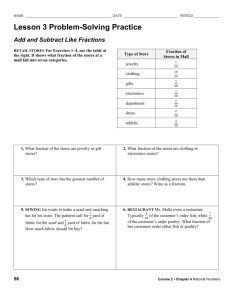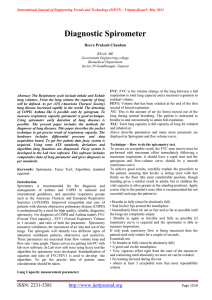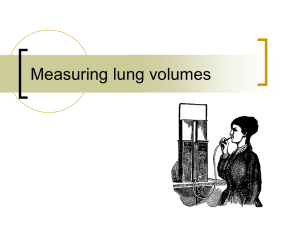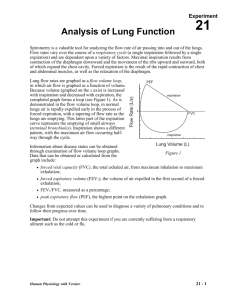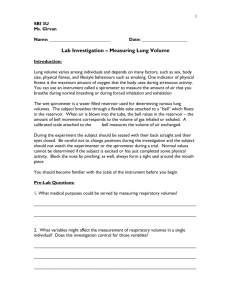Resting and Residual Lung Volume Questions
advertisement
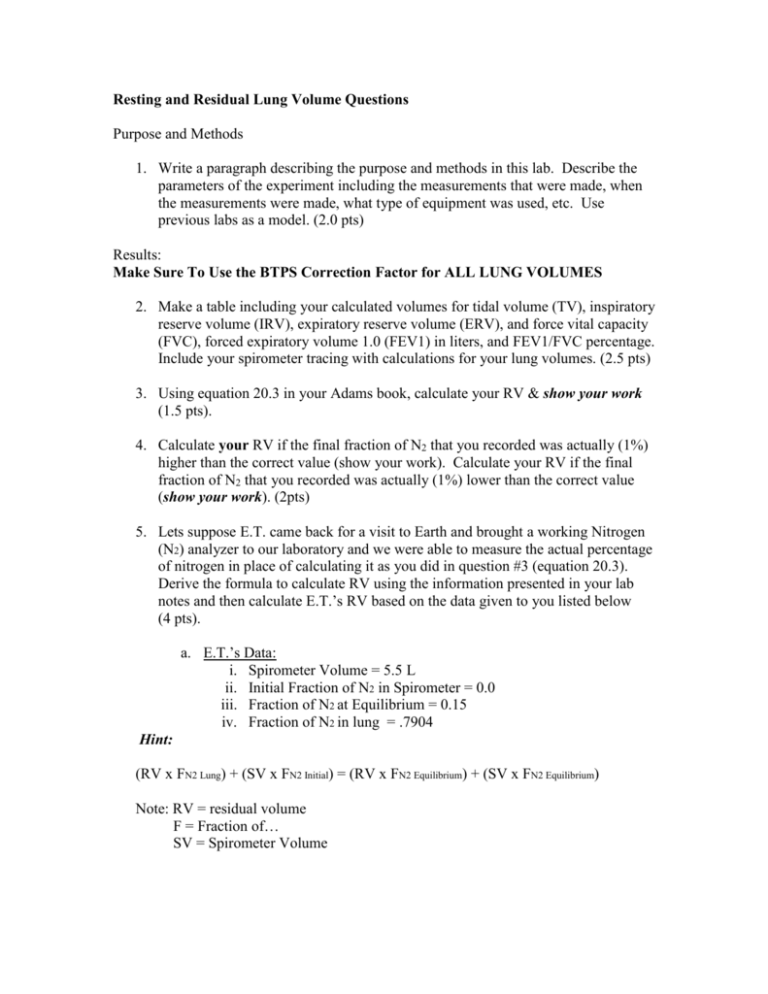
Resting and Residual Lung Volume Questions Purpose and Methods 1. Write a paragraph describing the purpose and methods in this lab. Describe the parameters of the experiment including the measurements that were made, when the measurements were made, what type of equipment was used, etc. Use previous labs as a model. (2.0 pts) Results: Make Sure To Use the BTPS Correction Factor for ALL LUNG VOLUMES 2. Make a table including your calculated volumes for tidal volume (TV), inspiratory reserve volume (IRV), expiratory reserve volume (ERV), and force vital capacity (FVC), forced expiratory volume 1.0 (FEV1) in liters, and FEV1/FVC percentage. Include your spirometer tracing with calculations for your lung volumes. (2.5 pts) 3. Using equation 20.3 in your Adams book, calculate your RV & show your work (1.5 pts). 4. Calculate your RV if the final fraction of N2 that you recorded was actually (1%) higher than the correct value (show your work). Calculate your RV if the final fraction of N2 that you recorded was actually (1%) lower than the correct value (show your work). (2pts) 5. Lets suppose E.T. came back for a visit to Earth and brought a working Nitrogen (N2) analyzer to our laboratory and we were able to measure the actual percentage of nitrogen in place of calculating it as you did in question #3 (equation 20.3). Derive the formula to calculate RV using the information presented in your lab notes and then calculate E.T.’s RV based on the data given to you listed below (4 pts). a. E.T.’s Data: i. Spirometer Volume = 5.5 L ii. Initial Fraction of N2 in Spirometer = 0.0 iii. Fraction of N2 at Equilibrium = 0.15 iv. Fraction of N2 in lung = .7904 Hint: (RV x FN2 Lung) + (SV x FN2 Initial) = (RV x FN2 Equilibrium) + (SV x FN2 Equilibrium) Note: RV = residual volume F = Fraction of… SV = Spirometer Volume Do this by setting the total amount of nitrogen in the system initially equal to the total amount of nitrogen in the system at the end of the equilibrium maneuver and then solving so that RV is found alone and on only one side of the equation (Example RV = something without RV in it). Finally, after this is complete don’t forget to add in the BTPS correction factor. Your final equation should have variables (not the numbers that you measured) for initial N2 fraction, final N2 fraction, initial spirometer bell volume, ambient temperature, barometric pressure, and water vapor pressure at ambient temperature. You must show each step and calculate E.T.s’ RV to receive full credit. For example: Full Credit Q = SV x HR => Q/HR = (SV x HR)/HR => Q/HR = SV Not Full Credit Q = SV x HR => Q/HR = SV Conclusions: 6. What is a normal value for FEV1 as a percentage of FVC? What can a value that is BELOW normal indicate? (1pt) 7. If you were going to measure RV more than once should you do the measurements back to back? Why or why not? (hint: think about assumed gas percentages and the type of gas you breathe during the test) (2pts)



